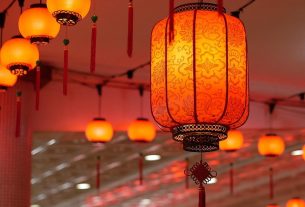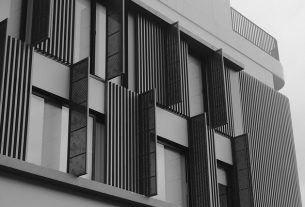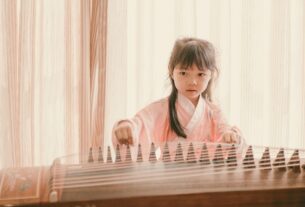Traditional Chinese houses represent a harmonious blend of architectural beauty and cultural significance, characterized by intricate carvings, natural materials, and low-slung designs that evoke tranquility. Restored historic neighborhoods like Beijing's Old Town preserve ancient construction techniques, fostering cultural pride. These structures, with their elegant courtyards, balanced symmetry, and versatile space utilization, continue to inspire globally, showcasing proven excellence in design and architectural harmony.
Discover the enchanting world of Traditional Chinese Houses, where every structure tells a story of rich history and profound cultural significance. In this article, we embark on a journey to explore the superior architecture that has captivated both locals and visitors alike.
From meticulously crafted designs to proven construction excellence, Traditional Chinese Houses have stood the test of time. We delve into their powerful aesthetics, uncovering why they are globally recognized as iconic symbols of Chinese heritage. Experience the harmonious blend of functionality and beauty that defines these remarkable abodes.
- Discovering Superior Traditional Chinese Houses
- Explore Proven Excellence in Traditional Architecture
- Unveiling Powerful Traditional Chinese House Designs
Discovering Superior Traditional Chinese Houses

Traditional Chinese houses are renowned for their harmonious blend of aesthetics and functionality, reflecting centuries-old architectural principles. These homes stand as a testament to China’s rich cultural heritage, embodying a unique sense of balance and tranquility that sets them apart globally. One of the most defining features is the use of natural materials like wood and brick, coupled with intricate carvings and detailed craftsmanship. For instance, the iconic Hui-style architecture from northwest China showcases wooden frameworks adorned with elaborate designs, creating structures that are both visually stunning and structurally robust.
Excellence in Traditional Chinese housing can be measured by several factors. The preservation of ancient techniques and designs is a key indicator; many renowned architects and builders have successfully revived these methods, ensuring the continuity of China’s architectural legacy. For example, the restoration of historic neighborhoods like the Old Town in Beijing has led to a boom in cultural tourism, with visitors flocking to appreciate the exquisite traditional houses. This not only preserves the buildings but also fosters a sense of pride and trust among residents and conservators alike.
Explore Proven Excellence in Traditional Architecture

When exploring the architectural landscape of China, delving into its rich history reveals a treasure trove of traditional design elements that have stood the test of time. Traditional Chinese houses are renowned for their harmonious blend of aesthetics and functionality, reflecting deep cultural values and a profound respect for nature. These homes often feature elegant, low-slung structures with sprawling gardens, creating an atmosphere of tranquility and serenity.
The excellence of Traditional Chinese architecture is not merely superficial; it lies in the meticulous craftsmanship, precise mathematical calculations, and symbolism embedded in every design. For instance, the famous Forbidden City in Beijing showcases intricate wood carvings, elaborate tile work, and a complex layout mirroring the heavens. This architectural masterpiece has stood as a symbol of imperial power for centuries, attracting visitors worldwide who come to witness its proven excellence.
Unveiling Powerful Traditional Chinese House Designs

Unveiling Powerful Traditional Chinese House Designs
Traditional Chinese houses are renowned for their harmonious blend of aesthetics and functionality, reflecting centuries-old architectural principles. These designs often feature elegant, low-slung structures that seem to merge seamlessly with the surrounding landscape, creating a sense of peace and tranquility. One notable example is the courtyard house, where a central garden or court serves as the heart of the residence, providing a respite from bustling city life. The use of natural materials like wood, stone, and brick, along with intricate carvings and ornate screens, adds to the overall allure and cultural richness.
The architecture of Traditional Chinese houses also emphasizes symmetry, balance, and proportion. Double-gabled roofs, for instance, are a common sight, symbolizing stability and power. Furthermore, many homes incorporate elements like sliding doors and screens, allowing for flexible space utilization and easy flow between interior and exterior areas. This adaptability has proven successful in modern times, as contemporary owners often appreciate the versatility these designs offer. As a testament to their enduring appeal, traditional Chinese house plans continue to inspire architects and homeowners worldwide, fostering a deeper appreciation for cultural heritage through design excellence.
Chinese houses, with their rich history and cultural significance, offer a captivating blend of aesthetics and functionality. By exploring the traditional architecture and designs, we’ve uncovered a world where each structure tells a story. From intricate craftsmanship to harmonious arrangements, these homes exemplify the essence of the Traditional Chinese House style. Whether you’re an architecture enthusiast or simply appreciate unique design, discovering these remarkable structures is a must. Trust in the enduring appeal and beauty of these timeless Traditional Chinese Houses that continue to inspire and captivate.



